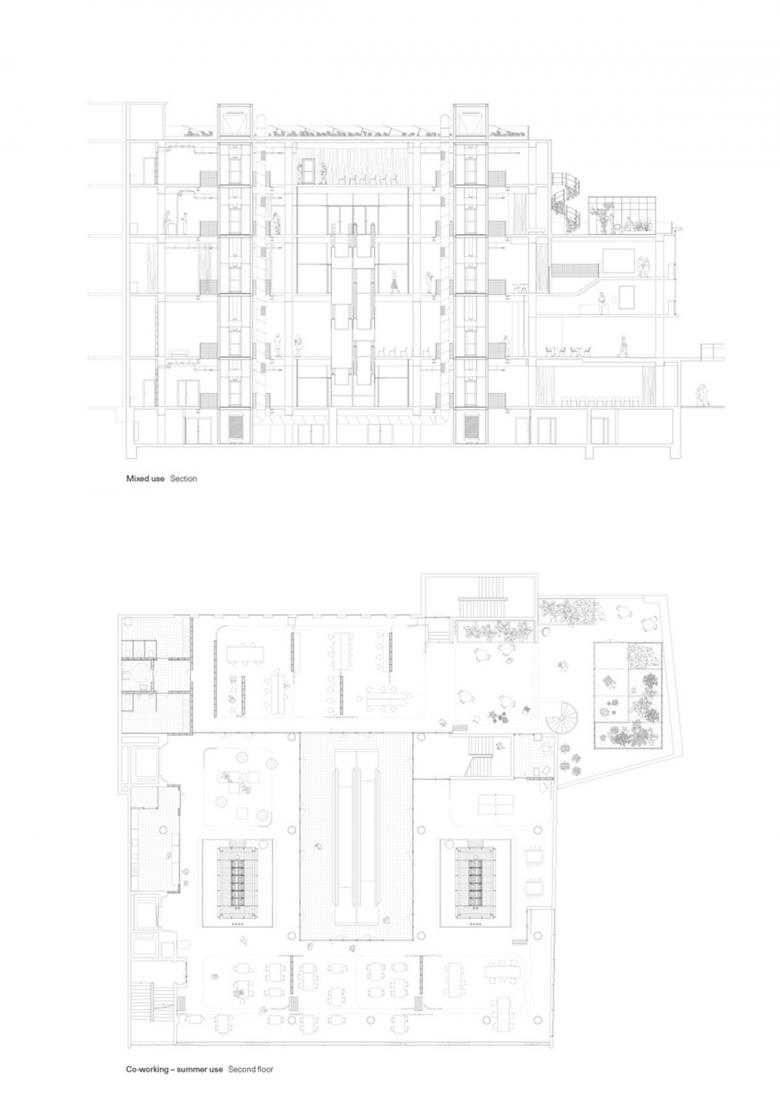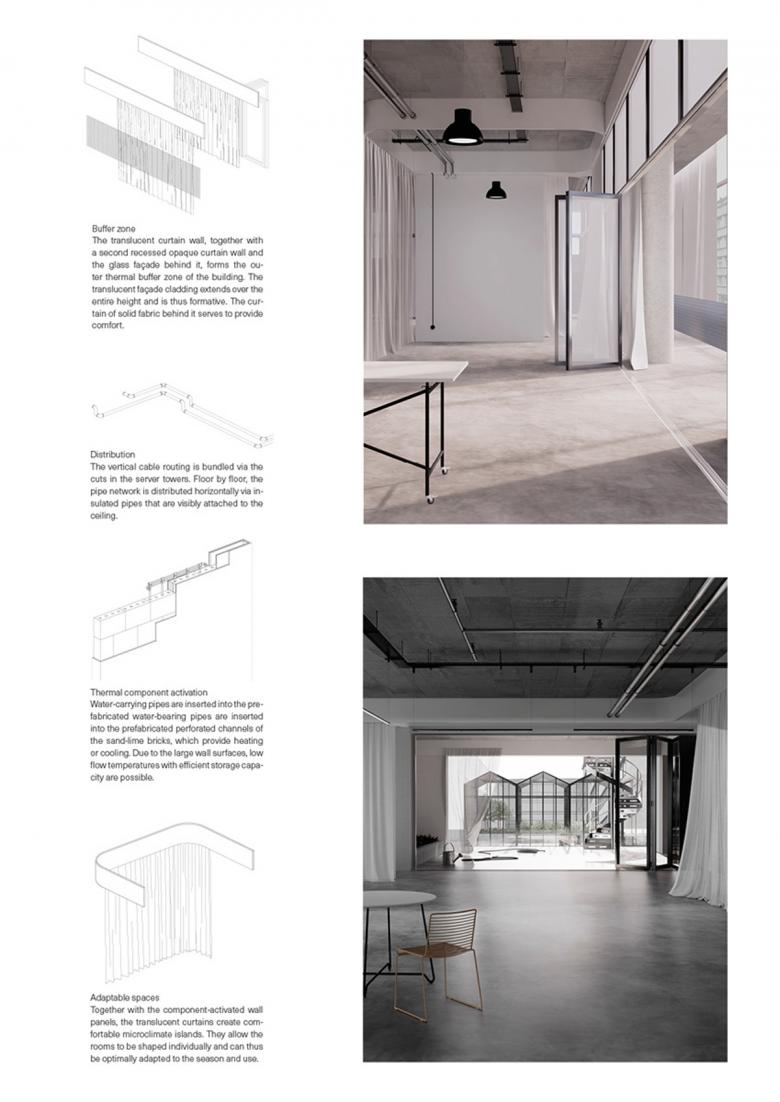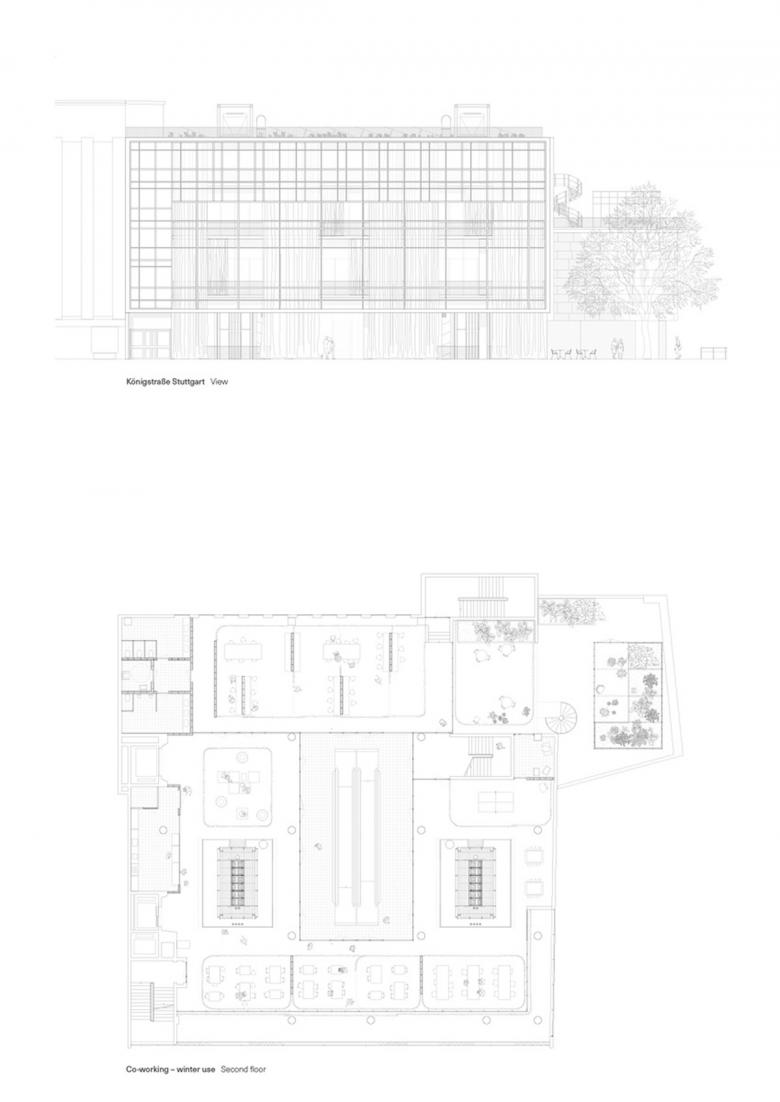Re: User - Data as a Resource
Back to Projects listProject Location
Stuttgart, Germany
Topic
New Centralities Public Space
Program
Mixed use - Infrastructure & Urban Compact, Public Space
Transformation of a former department store - Symbiosis between existing structure and digital asset
re:user stands for a new transformation. Moving data storage into the city center, making use of existing structures and thus simultaneously counteracting the problem of building demolition. It's an oppositional contribution to how the typology of the data center could change to exploit its potentials. It enables a public place for this discourse.
Billions of people around the world are online. Data and Big Data are becoming the most important resource of the 21st century. Yet, few people are aware that their digital consumption has an exorbitant impact on the climate. Awareness of these processes should be brought to society in the pursuit of a more climate-neutral future. How can architecture make the physical relationship between data and data storage more transparent to society and thus bring it closer? Data centers must be understood as architecture in order to reach the consciousness of society. This is exactly where we need to start, solve the problem of intransparency and use the space of data as a resource.
In the prime locations of the inner cities, the aging buildings are always demolished, often to be rebuilt on the same spot with the same urban planning framework. If we take a closer look at urban structures, the building structure of data centers can be compared with today‘s department store typology. Data centers are reduced to function and infrastructure. Department stores are reduced to their function, to maximize the sales area.The end result is a mono-functional cubature - one on the edge of the city, the other in the middle of the city. The former department store from the 1970s, located in Stuttgart's centre, is a prime example of how monofunctional building types are dealt with in German city centers. Under the aspect of sufficiency and the preservation of existing structure, the intervention should be minimal. The existing structure will be perforated floor by floor, into which the server towers will be inserted. The server components are stacked vertically in a steel and glass construction. The technology becomes visible in the building and transforms anonymity into a sculptural form. The server waste heat can be used effectively due to the short distances and low flow temperatures of the component-activated walls. These ensure that the temperature in the building remains constant throughout the year. In this way, energy is used that was previously released into the environment as lost heat energy. A synergy is created between the existing building and the technology. With climate as a design factor, the shape of the building changes from winter to summer. In winter, the need for comfortable spaces that radiate warmth grows. The curtains in the room, together with the component-active walls, divide the large open area into small microclimate islands. In winter, the usable area is reduced to the minimum. In summer, the usable area grows to a maximum. By cooling the component-activated wall panels, a comfortable temperature is also created in summer. The result is a flexible, multifunctional space that transforms the anonymity of the former department store and data center






